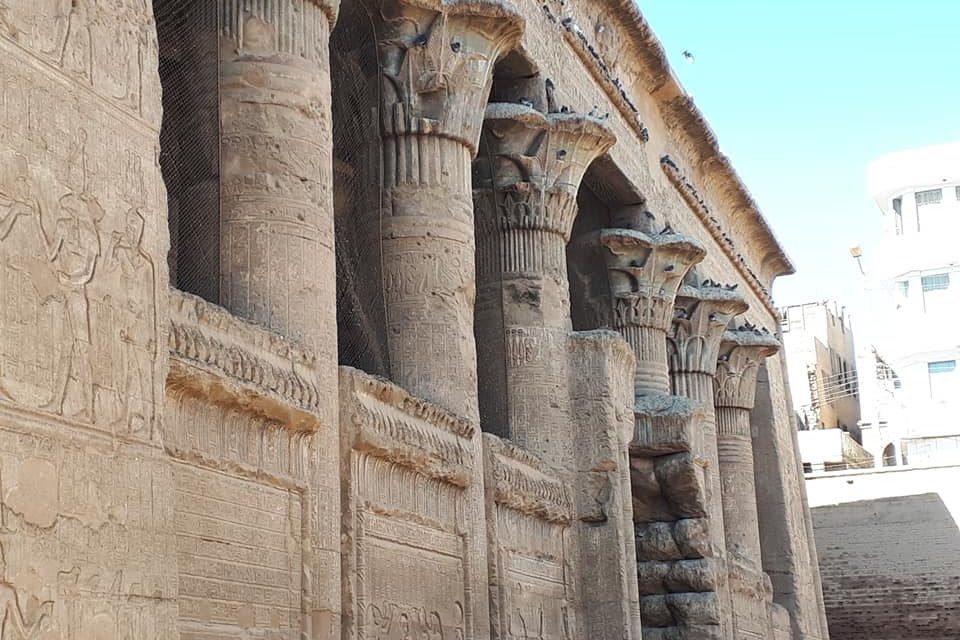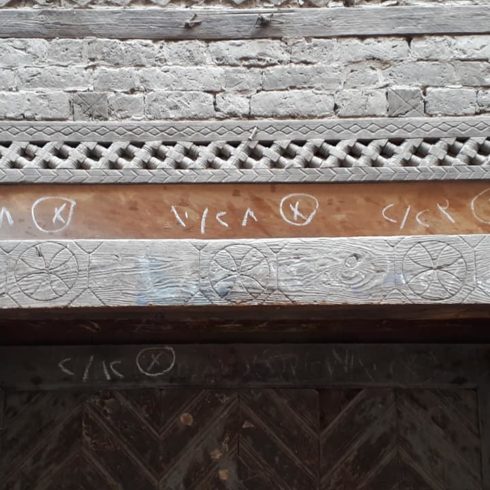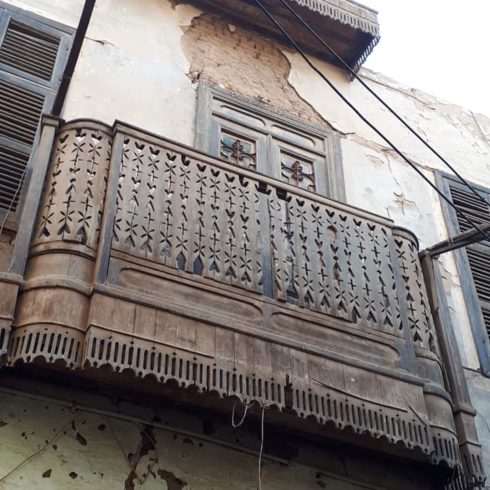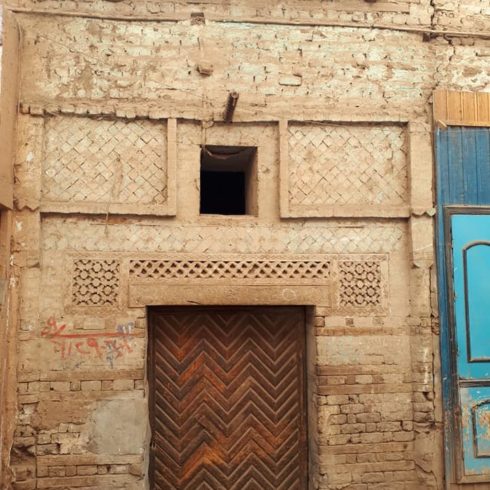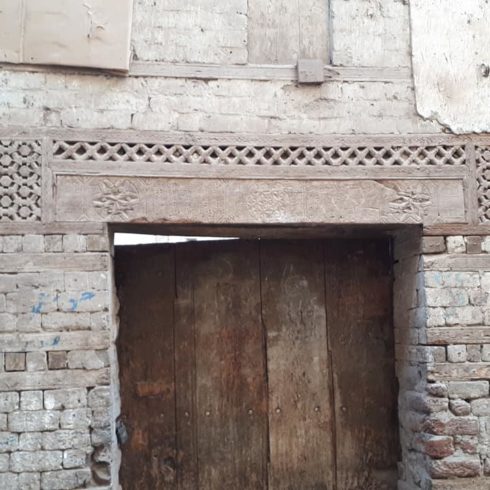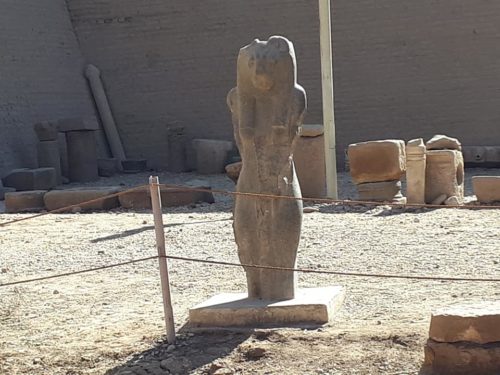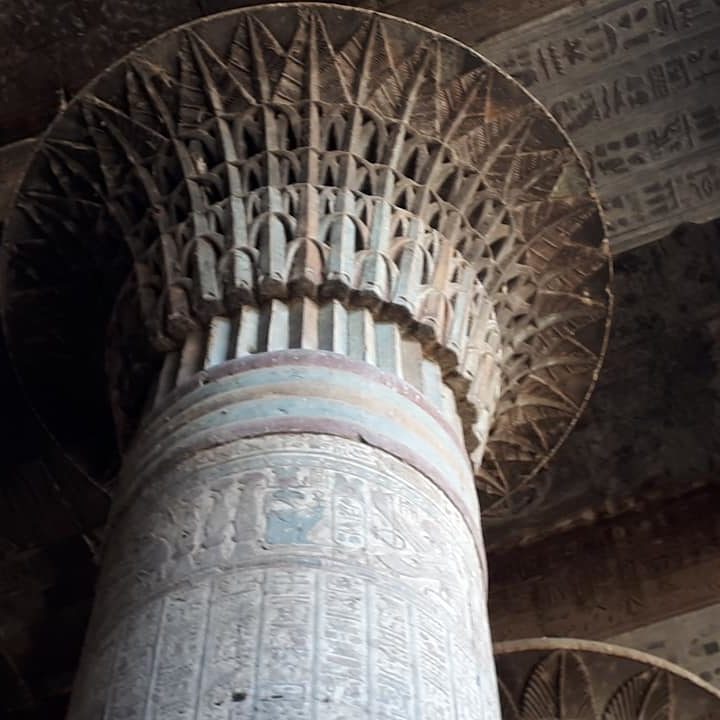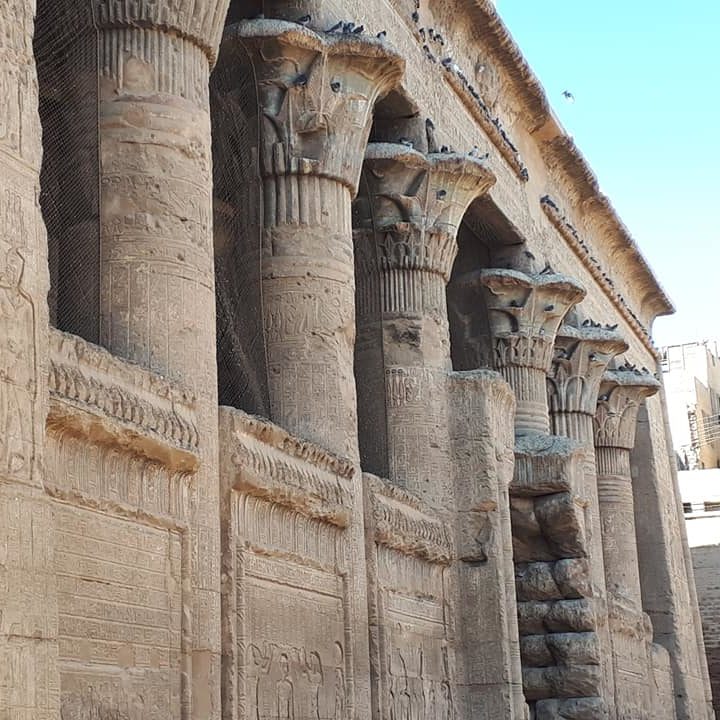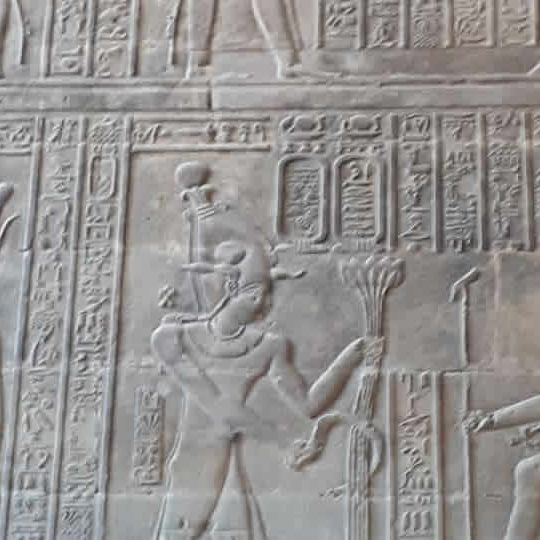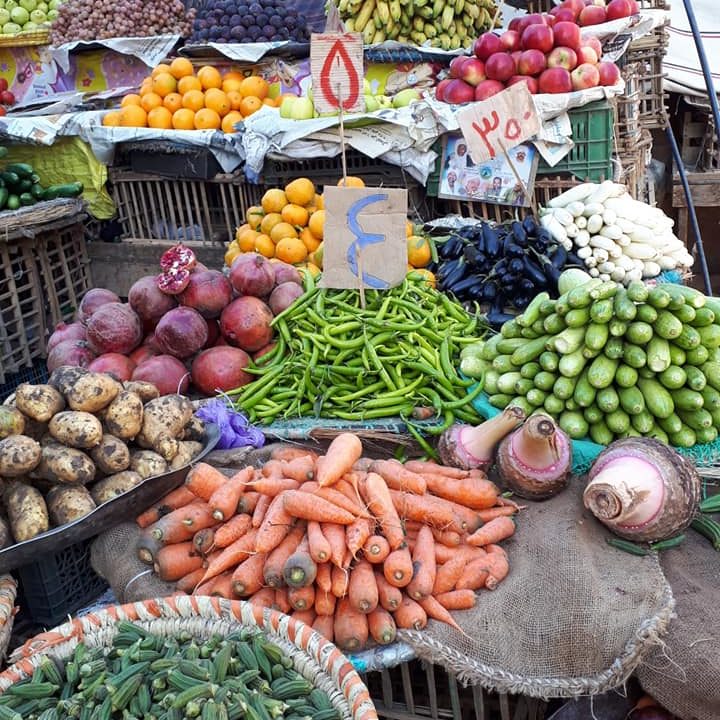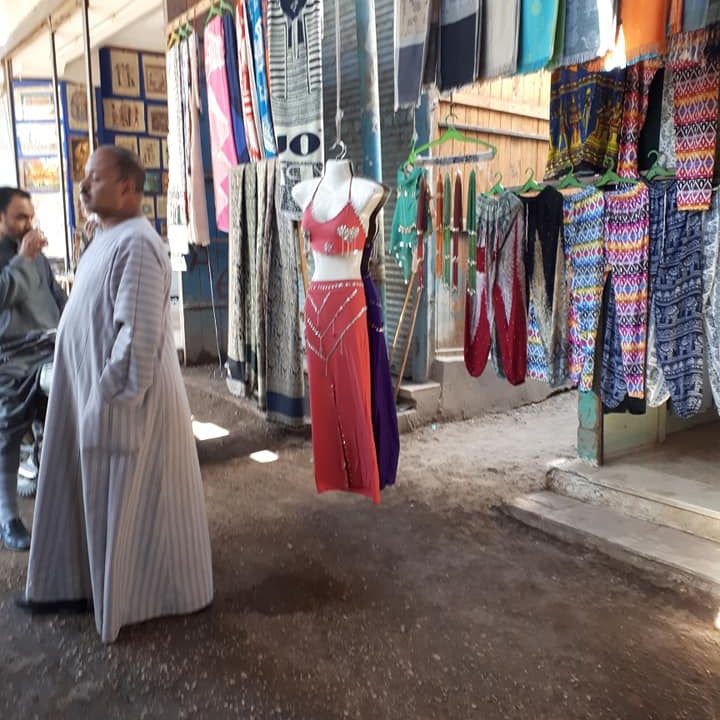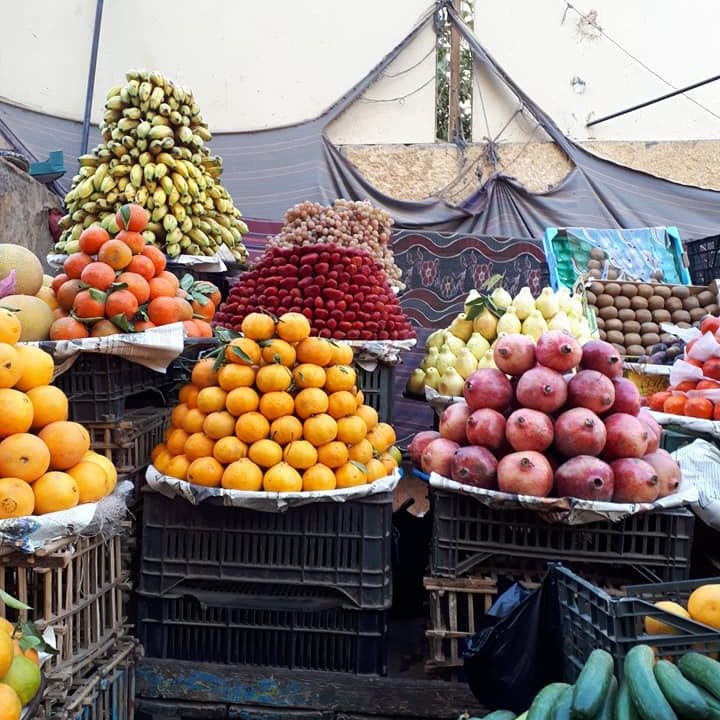Esna is a small, but very prosperous town that earns its current wealth from farming the fertile borders of the Nile – many trucks with tomatoes and other vegetables and fruit leave this bustling town every day to deliver all over Egypt.
But we will not disturb those farmers today – instead, from the wide open and busy boulevard flanking the river we will nip into an enticing, shaded alley – and into a completely different, much older world.As we emerge again into the sunlight at the ancient heart of Esna, a mighty temple greets us, sunk deep in an excavation pit surrounded by old houses with beautifully carved wooden `mashrabeeya` balconies. As we look down, history is looking right back up at us. This is only the first part of the temple of the great ram’s-headed God Khnum, the Divine Potter who formed the bodies of mankind on his potter’s wheel. It is dedicated to him, his consort here the Goddess Menhyt, their son Heka, and also to the fierce warrior Goddess Neith. There is a lovely statue of Menhyt still standing in the open courtyard, which always exerts a draw on visitors. Perhaps they can still feel the powers of ages past through this black basalt figure…
Only the first part of the temple is excavated – how tantalizing! – and the rest of his temple is still buried under the remains of the medieval town all around it. As we descend towards this lovely sanctuary, the stunning reliefs outside and inside the temple take us back into a magical world of long ago; a world full of mystery and inscrutable signs and scenes. Our gaze is drawn inexorably upwards to the soaring, intricate columns and ceilings with vivid colors, with more color revealed each year by meticulous cleaning by archaeologists. It is a sacred world – but one that we can only truly feel with our hearts, not fully understand with our brains. And as we look up from outside the temple, we can see that human life leaves layers upon layers…
Esna still carries its ancient Egyptian roots in its name – the ancient Egyptians called it ‘ta-senet’ or ‘ta-sny’, which the later Coptic Christians turned into ‘Sne’, onto which the Arabic conquerors then tacked the Arabic ‘el’ – and there you go: ‘El Sne’ became Esna. Thousands of years of history and many changes of overlords, all those layers of life passing overhead – but the ancients are still alive even in city names in this wondrous country…
One layer up, the temple is surrounded by medieval alleys and the scents and sounds of the local souk that still thrives there today. Let’s take a stroll through this wonderful market. Here, we see the fruits of the labors of the busy farmers, quite literally. Let’s feast our eyes on the vibrant colors of the fresh fruits and vegetables for sale, often stacked up in immaculate pyramids, fill our noses with the scents of the spices heaped in baskets all around us, admire the age-old copper work and the beautifully carved medieval doorways with signs of both Coptic and Islamic inhabitants. One of the oldest Coptic churches and one of the oldest mosques in Egypt are hidden in this warren of wondrous alleys – let’s see if we can find them!
Esna has everything in its small center, but is mostly unspoiled by mass tourism – the big floating hotels don’t stop here, only dahabeeyas like our own Abundance do. So we can wander, undisturbed, and see real life as it has remained through centuries, through different religions and cultures. This old center has a stillness that the bustling modern town around it does not mimic. A nice glass of mint tea or Turkish coffee in a local coffee shop will complete the experience of our first stop on our journey down the Nile, at very special place indeed. An experience of real life, and real people, leaving their footsteps and layers of life behind to speak to us from the mists of time…

